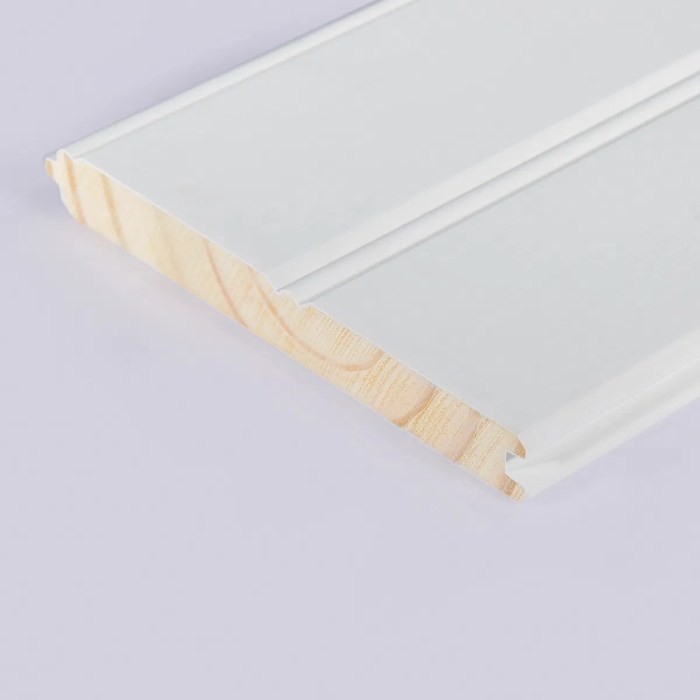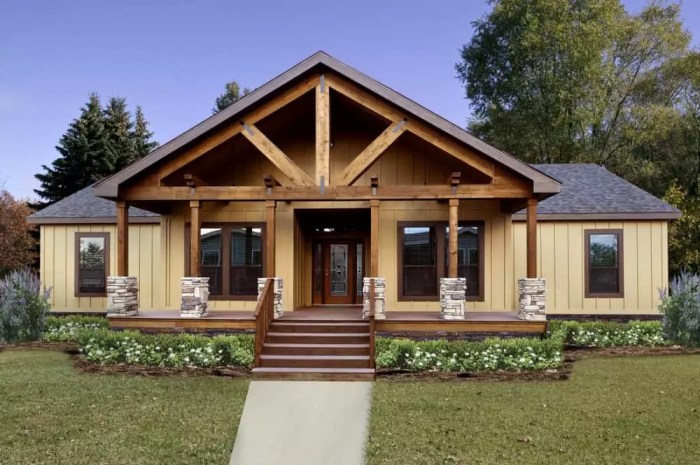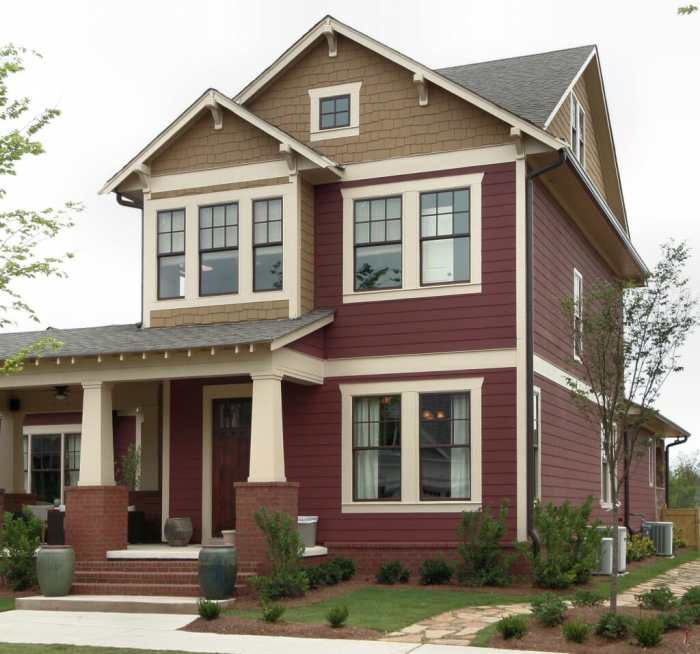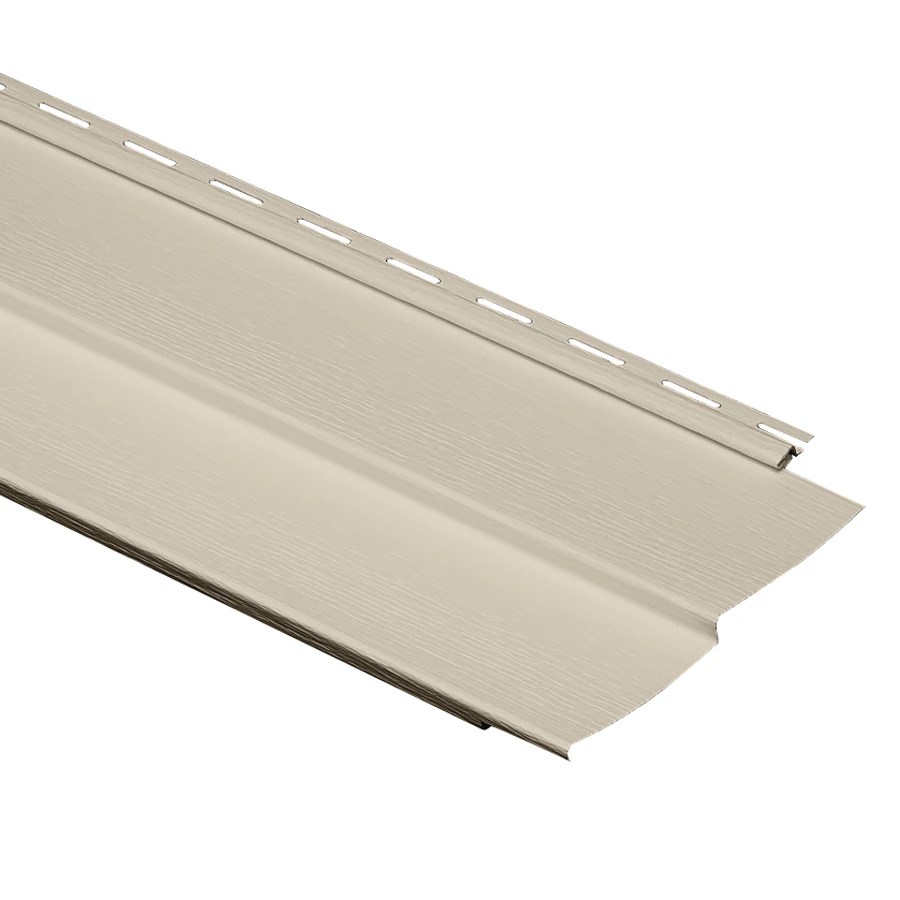Transforming your home’s exterior? The right windows and siding dramatically impact curb appeal, energy efficiency, and even your home’s resale value. This isn’t just about aesthetics; it’s a strategic investment affecting comfort, cost savings, and long-term property value. We’ll dissect every aspect, from material selection and installation to maintenance and budgeting, ensuring you make informed decisions for a stunning and functional upgrade.
This comprehensive guide navigates the complexities of choosing windows and siding, providing a practical framework for your project. We’ll compare various materials, analyze energy efficiency implications, explore aesthetic considerations, and offer step-by-step installation guidance. By the end, you’ll possess the knowledge to confidently tackle this significant home improvement endeavor.
Types of Windows and Siding Materials
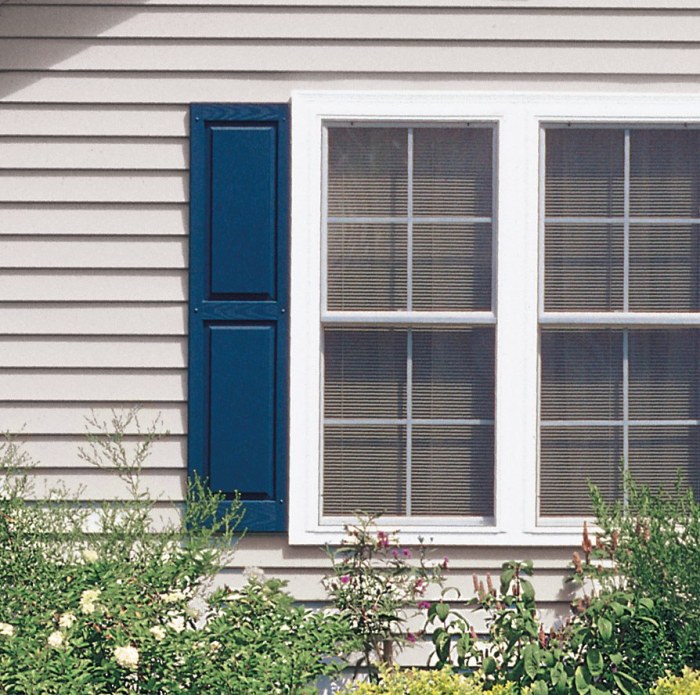
Choosing the right windows and siding for your home is a crucial decision impacting both aesthetics and long-term value. Understanding the various materials available, their pros and cons, and their lifespans is essential for making an informed choice that aligns with your budget and needs. This analysis will equip you with the knowledge to select the best options for your specific circumstances.
Window Material Comparison
Selecting the right window material significantly impacts energy efficiency, maintenance, and overall cost. The following table provides a detailed comparison of popular window materials:
| Material | Pros | Cons | Cost |
|---|---|---|---|
| Vinyl | Low maintenance, affordable, energy-efficient (with proper insulation), variety of colors and styles. | Can warp or fade in extreme temperatures, less durable than other options, may not be as aesthetically pleasing as wood or fiberglass. | Low to Moderate |
| Wood | Beautiful aesthetic appeal, excellent insulator, can be customized and painted. | High maintenance (requires regular painting and sealing), susceptible to rot and insect damage, more expensive than vinyl. | High |
| Fiberglass | Durable, low maintenance, energy-efficient, resists warping and fading, excellent aesthetic options. | Expensive, limited color options compared to vinyl. | High |
| Aluminum | Durable, low maintenance, affordable, energy-efficient (with proper insulation). | Conducts heat and cold, can be prone to dents and scratches, less aesthetically pleasing than wood or fiberglass. | Moderate |
Siding Material Characteristics
The choice of siding material influences your home’s curb appeal, durability, and maintenance requirements. Consider these characteristics when making your selection:
Understanding the properties of each siding material is crucial for making an informed decision that considers both aesthetics and longevity. The following Artikels the key characteristics of common siding options.
- Vinyl Siding: Lightweight, affordable, low maintenance, comes in a wide variety of colors and styles. However, it can be easily damaged and may not be as durable as other options. It is also susceptible to fading in intense sunlight.
- Wood Siding: Classic look, provides excellent insulation, and can be customized with paint or stain. Requires significant maintenance, including regular painting and sealing, and is susceptible to rot, insect infestation, and fire damage. It’s also a more expensive option.
- Fiber Cement Siding: Durable, fire-resistant, low maintenance, and offers a variety of styles and textures mimicking wood. However, it is heavier than vinyl and more expensive to install. It can also be susceptible to cracking if not properly installed.
- Metal Siding (Aluminum or Steel): Long-lasting, durable, fire-resistant, and low maintenance. It’s resistant to insect damage and rot, but it can dent and is more susceptible to damage from hail. It can also be more expensive than vinyl.
Lifespan and Maintenance of Window and Siding Materials
The longevity and maintenance requirements of your windows and siding directly impact the overall cost of homeownership. Proper maintenance can significantly extend the lifespan of these materials. The following table Artikels expected lifespans and maintenance needs:
| Material | Lifespan (Years) | Maintenance |
|---|---|---|
| Vinyl Windows | 20-30 | Occasional cleaning; check for cracks or seals |
| Wood Windows | 50+ (with proper maintenance) | Regular painting and sealing, occasional repairs |
| Fiberglass Windows | 50+ | Occasional cleaning |
| Aluminum Windows | 30-40 | Occasional cleaning, check for corrosion |
| Vinyl Siding | 20-30 | Occasional cleaning, check for damage |
| Wood Siding | 20-30 (with proper maintenance) | Regular painting and sealing, occasional repairs |
| Fiber Cement Siding | 50+ | Occasional cleaning, check for cracks |
| Metal Siding | 50+ | Occasional cleaning, check for dents or corrosion |
Energy Efficiency Considerations
Your home’s windows and siding are critical components impacting energy efficiency and, consequently, your utility bills. Smart choices in these areas can significantly reduce energy consumption and contribute to a smaller carbon footprint. Understanding the impact of material selection and installation is crucial for maximizing your home’s energy performance.
The right windows and siding act as a significant barrier against heat loss in winter and heat gain in summer. This barrier effect directly influences your heating and cooling needs. Factors like U-values and R-values, along with proper installation techniques, determine how effectively this barrier functions. Failing to optimize these elements can lead to substantial energy waste and increased costs over the lifetime of your home.
Factors Influencing Energy Efficiency of Windows and Siding
Several key factors determine the energy efficiency of your windows and siding. Careful consideration of these elements is essential for making informed decisions that will pay off in long-term energy savings.
- U-Value: A lower U-value indicates better insulation. The lower the number, the less heat escapes in winter and enters in summer.
- R-Value: A higher R-value signifies better insulation. The higher the number, the more resistant the material is to heat transfer.
- Material Type: Different materials offer varying levels of insulation. For example, double- or triple-pane windows generally outperform single-pane options.
- Air Leaks: Gaps and cracks around windows and siding allow air infiltration, reducing energy efficiency. Proper sealing and caulking are vital.
- Window Frame Material: The material of the window frame (e.g., wood, vinyl, fiberglass) significantly affects its insulation properties.
- Siding Material: Siding materials like fiber cement and vinyl offer different levels of insulation and impact resistance.
- Glazing Type: Low-E coatings and gas fills (argon, krypton) in windows improve insulation and reduce UV transmission.
- Installation Quality: Professional installation ensures proper sealing and minimizes air leaks, maximizing the effectiveness of your windows and siding.
Comparative Analysis of Energy-Efficient Options
The following table compares the energy efficiency of several common window and siding materials. Remember that actual performance can vary based on specific product features and installation quality. These values are representative averages and may not reflect every product on the market.
| Material | U-Value (BTU/hr·ft²·°F) | R-Value (hr·ft²·°F/BTU) | Energy Savings (Estimated Annual Percentage Reduction Compared to Standard Options) |
|---|---|---|---|
| Double-Pane Window (Low-E) | 0.25 | 4 | 15-25% |
| Triple-Pane Window (Low-E, Argon Fill) | 0.15 | 6.7 | 25-35% |
| Vinyl Siding | N/A (Not directly applicable) | ~4 (depending on thickness and installation) | 5-15% (depending on existing wall insulation) |
| Fiber Cement Siding | N/A (Not directly applicable) | ~2-3 (depending on thickness and installation) | 5-10% (depending on existing wall insulation) |
Impact of Proper Installation on Insulation and Energy Costs
Proper installation is paramount to achieving the energy savings promised by high-performance windows and siding. A poorly installed system, even with superior materials, will compromise energy efficiency and potentially lead to increased energy bills and premature material failure. Consider these points:
- Air Sealing: Thorough sealing around windows and siding prevents air infiltration, a major source of energy loss. This includes using appropriate sealants and ensuring a tight fit between components.
- Flashing and Water Management: Proper flashing prevents water intrusion, which can damage the structure and compromise insulation.
- Insulation Continuity: Maintain continuous insulation around windows and siding to prevent thermal bridging, where heat flows easily through less-insulated areas.
- Professional Installation: Hiring experienced installers ensures the job is done correctly, maximizing the energy efficiency of your investment.
Aesthetic Considerations and Design
Choosing the right windows and siding isn’t just about functionality; it’s a crucial design decision that significantly impacts your home’s curb appeal and overall value. The aesthetic choices you make will shape the character of your house, reflecting your personal style and enhancing its architectural features. Consider the interplay of colors, materials, and styles to create a cohesive and visually stunning exterior.
The right combination of windows and siding can dramatically elevate your home’s appearance, transforming it from ordinary to extraordinary. This section will delve into popular styles and colors, showing you how to create a visually appealing and valuable property. We’ll explore how different materials and designs interact with various architectural styles, ensuring your home makes a lasting impression.
Window and Siding Styles for Different Architectural Styles
The following table illustrates how window and siding styles can complement different architectural designs. Matching these elements creates a harmonious and visually appealing exterior. Remember that these are guidelines; individual preferences and local building codes should always be considered.
| Architectural Style | Window Style | Siding Style |
|---|---|---|
| Victorian | Double-hung, bay windows, casement windows with intricate detailing | Wood clapboard, shingle siding, sometimes with decorative trim |
| Ranch | Single-hung, sliding windows, often with simple designs | Horizontal wood or vinyl siding, sometimes brick or stucco |
| Colonial | Six-over-six double-hung, multi-paned windows, often with shutters | Wood clapboard, vinyl siding that mimics clapboard, brick |
| Craftsman | Casement, double-hung windows with simple lines and grids | Wood shingles, stucco, stone, sometimes with exposed beams |
| Modern | Large, expansive windows, often floor-to-ceiling, minimal framing | Fiber cement siding, stucco, metal panel siding |
Visual Description of a Home with Complementary Window and Siding Choices
Imagine a charming Craftsman-style home with warm, earthy tones. The siding is made of natural cedar shingles, stained a rich, deep brown that complements the surrounding landscape. The windows are double-hung, featuring simple grids and a dark bronze finish that contrasts beautifully with the lighter siding. The color palette is anchored by the brown siding, accented by the bronze windows and the natural green of the surrounding trees and landscaping. The overall effect is one of understated elegance and natural harmony.
Impact of Window and Siding Choices on Curb Appeal and Home Value
Strategic window and siding selections significantly influence a home’s curb appeal and, consequently, its market value. A well-maintained exterior with aesthetically pleasing windows and siding instantly enhances a home’s visual attractiveness, making it more appealing to potential buyers. Studies have consistently shown that improvements to a home’s exterior, including new windows and siding, can yield a substantial return on investment, often exceeding the initial cost of the upgrades. For example, a recent study by Remodeling magazine showed that replacing siding could recoup around 77% of its cost at resale. Similarly, window replacements often yield a high return, demonstrating the significant impact these upgrades have on a property’s value.
Installation and Maintenance
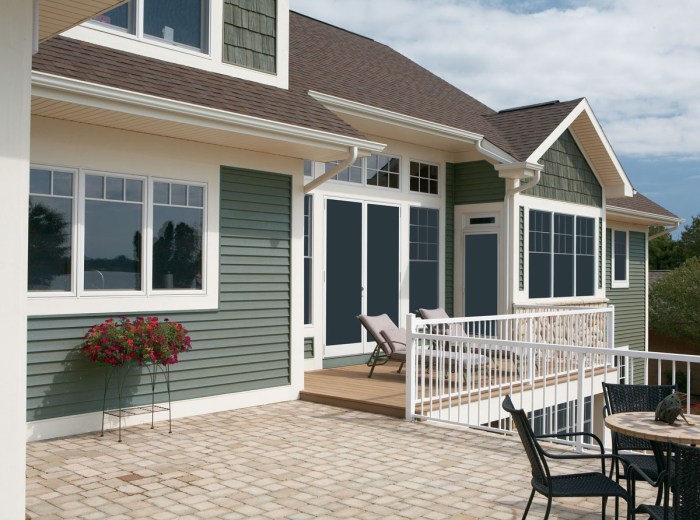
Proper installation and consistent maintenance are crucial for maximizing the lifespan and performance of your windows and siding. Neglecting these aspects can lead to costly repairs, reduced energy efficiency, and diminished aesthetic appeal. This section details best practices for both installation and long-term care.
Window Installation Best Practices
Successful window installation hinges on meticulous preparation and execution. Failing to follow these steps can compromise the window’s seal, leading to drafts and energy loss.
- Precise Measurement and Ordering: Accurate measurements are paramount. Errors here lead to ill-fitting windows, compromising weather sealing and aesthetics. Use a laser measure for precision, and always double-check your measurements before ordering.
- Proper Framing Preparation: Ensure the window frame is plumb, level, and square. Any imperfections will transfer to the installed window. Use shims to adjust as needed, ensuring a solid and stable base.
- Careful Installation: Gently set the window into the opening, ensuring it sits squarely. Use appropriate fasteners, avoiding over-tightening which can crack the frame.
- Complete Weather Sealing: Apply a high-quality sealant around the entire perimeter of the window frame to prevent air and water infiltration. This is a critical step for energy efficiency and preventing rot.
- Final Inspection: After installation, inspect the window for proper operation, alignment, and airtightness. Check for any gaps or leaks.
Siding Installation Best Practices
Correct siding installation protects your home’s exterior and enhances its curb appeal. Improper installation can lead to water damage, structural issues, and an unsightly appearance.
- Substrate Preparation: Thoroughly inspect the underlying wall for any damage, ensuring it’s structurally sound and free of rot or insect infestation. Repair any issues before starting.
- Proper Flashing and Water Barriers: Install flashing and water-resistant barriers to protect against moisture penetration. These are essential for preventing water damage behind the siding.
- Starting Point and Alignment: Begin installation at a corner or other designated starting point, ensuring proper alignment and levelness. Use a level frequently to maintain consistency.
- Secure Fastening: Use appropriate fasteners and install them according to the manufacturer’s instructions. Over-fastening can damage the siding, while under-fastening can lead to loose panels.
- Careful Caulking and Sealing: Seal all seams and joints with a high-quality caulk to prevent water infiltration. This step is crucial for maintaining the siding’s integrity and longevity.
Common Installation Problems and Avoidance Strategies
Several common issues can arise during window and siding installation. Proactive measures can prevent many of these problems.
Window Installation Problems: Incorrect measurements leading to ill-fitting windows; inadequate weather sealing resulting in drafts and energy loss; improper installation causing misalignment and operational issues. Avoidance Strategies: Precise measurements using laser measuring tools; application of high-quality sealant around the entire perimeter; careful installation following manufacturer instructions.
Siding Installation Problems: Poor substrate preparation resulting in damage behind the siding; inadequate flashing and water barriers leading to moisture penetration; improper fastening causing loose or damaged panels. Avoidance Strategies: Thorough inspection and repair of the underlying wall; installation of proper flashing and water barriers; careful fastening according to manufacturer instructions.
Window and Siding Cleaning and Maintenance
Regular cleaning and maintenance extend the life of your windows and siding, preserving their beauty and functionality. The frequency and methods vary depending on the material.
| Material | Cleaning Method | Maintenance Schedule |
|---|---|---|
| Vinyl Siding | Wash with a solution of mild detergent and water using a soft-bristled brush or sponge. Rinse thoroughly. | Twice yearly (spring and fall) |
| Wood Siding | Wash with a solution of mild detergent and water. For more stubborn stains, consider a pressure washer (low pressure setting). Apply wood preservative as needed. | Annually, with additional cleaning as needed. |
| Aluminum Siding | Wash with a solution of mild detergent and water. Avoid abrasive cleaners. | Twice yearly (spring and fall) |
| Glass Windows | Clean with a glass cleaner and a soft cloth or squeegee. | As needed, or at least twice yearly. |
| Vinyl Windows | Wash with a solution of mild detergent and water. Avoid abrasive cleaners. | Twice yearly (spring and fall) |
Cost and Budgeting
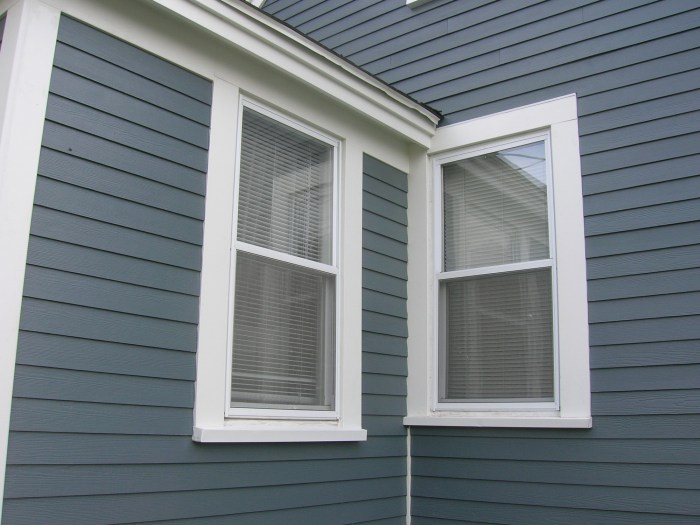
Replacing your windows and siding is a significant home improvement investment, but one that can dramatically increase your home’s value and energy efficiency. Understanding the associated costs is crucial for effective budgeting and avoiding financial surprises. A well-planned budget ensures a smooth project execution, maximizing your return on investment.
Accurate cost estimation requires careful consideration of several key factors. Failing to account for all expenses can lead to project delays and financial strain. Let’s break down the typical costs and factors influencing your overall expenditure.
Typical Costs Associated with Window and Siding Projects
The cost of a window and siding replacement project varies greatly depending on several factors, but having a general understanding of the typical cost breakdown is essential for effective budgeting. The following provides a reasonable estimate, keeping in mind that regional differences and project specifics will significantly impact the final figures.
- Materials: This is often the largest portion of the cost. Windows range from a few hundred dollars to several thousand per unit, depending on size, material (e.g., vinyl, wood, fiberglass), and features (e.g., energy-efficient coatings, soundproofing). Siding costs vary similarly, with vinyl being generally more affordable than wood, fiber cement, or metal. Expect to spend between $3 and $15 per square foot for siding materials.
- Labor: Professional installation is crucial for ensuring proper functionality and longevity. Labor costs typically range from $2,000 to $10,000 or more, depending on the project’s size and complexity. This includes the time spent removing old materials, preparing the surfaces, and installing the new windows and siding.
- Permits and Inspections: Most localities require permits for significant home renovations. Permit fees vary but are typically a few hundred dollars. Inspection fees also add to the overall cost.
- Disposal of Old Materials: Properly disposing of old windows and siding adds to the project’s cost. Recycling or landfill fees should be factored into your budget.
- Contingency: It’s always wise to include a contingency of 10-15% of the total estimated cost to cover unexpected expenses or material price fluctuations.
Factors Influencing Overall Project Cost
Several factors beyond the basic material and labor costs can significantly influence the final price tag of your window and siding replacement. Understanding these factors is critical for realistic budgeting and avoiding cost overruns.
- Size of the Project: Larger homes naturally require more materials and labor, leading to higher overall costs. A small project might cost a few thousand dollars, while a large project could easily exceed $20,000.
- Material Choice: The type of windows and siding you choose drastically impacts the cost. High-end materials like wood or fiber cement siding and custom-designed windows are significantly more expensive than standard vinyl options.
- Labor Rates: Labor costs vary regionally and by contractor. Highly skilled and experienced installers often charge higher rates than less experienced ones.
- Project Complexity: Projects involving intricate designs, unusual window shapes, or difficult-to-access areas require more time and expertise, thus increasing labor costs.
- Unforeseen Issues: Unexpected problems like rotted framing or damaged sheathing can significantly increase both labor and material costs.
Financing Options for Window and Siding Projects
Financing your window and siding replacement project can make a large undertaking more manageable. Several options are available, each with its own advantages and disadvantages.
- Home Equity Loans or Lines of Credit (HELOCs): These loans use your home’s equity as collateral. Interest rates are generally lower than unsecured loans, but you risk losing your home if you default.
- Personal Loans: Unsecured personal loans are readily available from banks and credit unions. Interest rates can be higher than secured loans, depending on your credit score.
- Contractor Financing: Some contractors offer financing options directly to their clients, often with manageable payment plans. However, interest rates and terms may vary.
- Credit Cards: Using a credit card can be convenient, but high-interest rates can quickly escalate the total cost if not paid off promptly. Only consider this if you can pay off the balance quickly.
Upgrading your windows and siding is more than just a cosmetic change; it’s a multifaceted project impacting energy efficiency, home value, and overall curb appeal. By carefully considering material choices, installation techniques, and long-term maintenance, you can maximize your investment and enjoy the rewards of a beautifully enhanced home for years to come. Remember, thorough planning and informed decision-making are key to a successful outcome. Don’t hesitate to consult with professionals for personalized guidance and expert installation.
Answers to Common Questions
What’s the average lifespan of vinyl siding?
Vinyl siding typically lasts 20-30 years, depending on quality and maintenance.
Can I install windows and siding myself?
While DIY is possible, professional installation is generally recommended for optimal results and warranty coverage. Improper installation can lead to leaks and energy loss.
How often should I clean my windows and siding?
Cleaning frequency varies by material and climate. Generally, a yearly cleaning is recommended, with more frequent cleaning in areas with high pollen or pollution.
What are the best windows for noise reduction?
Multi-pane windows with laminated glass offer superior noise reduction compared to single-pane options.
How do I choose siding colors that complement my home’s style?
Consider your home’s architectural style and surrounding landscape. Consult color palettes and seek professional advice for harmonious combinations.
